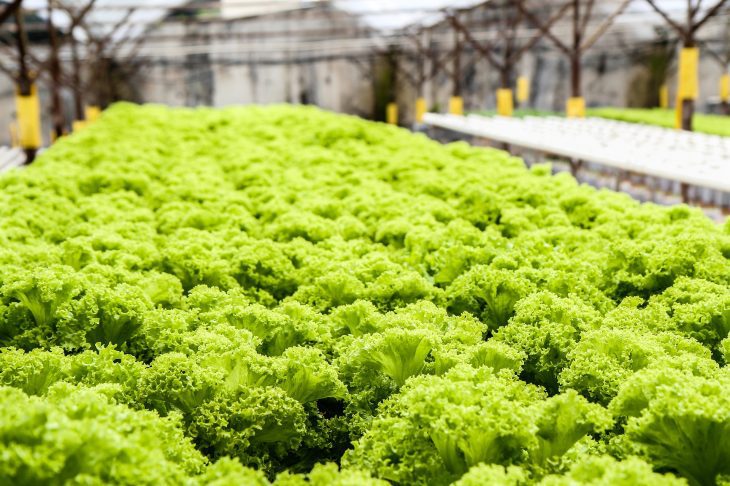Ebb and flow hydroponics

Ebb and flow hydroponics, or flood and drain hydroponics, is a method of growing plants without soil, using a nutrient solution. The plants grow in a container filled with a growing media, like perlite or coconut coir, and the container is periodically flooded with the nutrient solution. The excess solution drains back to the collection reservoir, creating a cycle of flooding and draining.
Ebb and flow is a popular hydroponics system because you can control the plants nutrient intake with ease and the drain period offers an oxygen-rich environment for the roots. It is also relatively easy to set up and maintain, making it a good choice for both commercial and home growers.
Ebb and flow hydroponic system advantages
- Precise nutrient control: With ebb and flow hydroponics, the nutrient solution can be carefully balanced to provide the exact nutrients the plants need for optimal growth.
- Consistent oxygen supply: The growing medium in an ebb and flow system is periodically drained of excess nutrient solution, which helps to keep the roots oxygenated.
- Easy to set up and maintain
- High crop yields: Because ebb and flow hydroponics systems provide plants with a consistent supply of nutrients and oxygen, they can often achieve higher crop yields compared to traditional soil-based growing methods.
- Water-efficient: Ebb and flow systems use less water than traditional soil-based growing methods because the nutrient solution is reused and only a small amount is lost to evaporation.
- Pest and disease control: Because plants are grown in a controlled environment, they are less prone to pests and diseases than plants grown in soil.
Ebb and flow disadvantages
- the volume of water brought in h top tray needs to be carefully calibrated to avoid spills
- watch for drain clogs
- requires constant monitoring
Epic Gardening explains how the ebb and flow system works and what you need to know about it
How to make an ebb and flow hydroponic system
To make an ebb and flow hydroponics system, you will need the following materials:
- A container for the plants: This can be a tray or any other type of container that is large enough to hold the plants and their growing medium. It’s placed high in the system
- A growing medium: This can be peat moss, coconut coir, or any other type of material that will hold water and nutrients while allowing excess water to drain away.
- A nutrient solution: This can be purchased or made using a combination of water and nutrient supplements.
- A reservoir for the nutrient solution: This will hold the nutrient solution and is placed below the plants try, allowing the nutrient solution to drain from the plants
- A pump and tubing: This will be used to move the nutrient solution from the reservoir to the container with the plants.
- An air stone: This will be used to oxygenate the nutrient solution as it is pumped into the container with the plants.
- A timer to control the flood&drain periods: this will start and stop the water pump and flood the upper tray
- Adequate lightning for the plants: if you don’t have natural lightning, then you will need hydroponic lights and a separate timer for the lights
To set up the ebb and flow system, follow these steps:
- Make the initial setup: the nutrient solution reservoir should be able to contain enough nutrient solution. It should be placed lower in the system, and contain the pump and the pipe that returns the excess solution. The pump should be connected to a timer that will regulate the flood volume. The airstone should also be placed inside the collection reservoir
- The higher container, where the plants are placed should either be filled with the growing medium, either have multiple pots inside
- Place the plants in the top container or pots and arrange them so that their roots get in contact with the nutrient solution.
- Fill the reservoir with the nutrient solution and connect the pump and the air stone.
- Set the timer so that it pumps the nutrient solution into the top container for a certain amount of time (usually 15-30 minutes) and then shuts off.
- As the nutrient solution is pumped into the container, it will flood the roots of the plants and then drain back into the bottom reservoir.
- Monitor the nutrient solution levels in the reservoir and add more as needed to keep the plants well-nourished.
Everest Fernandez explains how to setup an ebb and flow system step by step


Greetings, I am interested in this Ebb & Hydroponic.
I am a disabled Entrepreneur specializing in Worm farming still new in the field. Last year I started with Hydroponic Tunnel planting Parsley it doesn’t work for me due to subcontractor.
I am interested to start again using the above method.